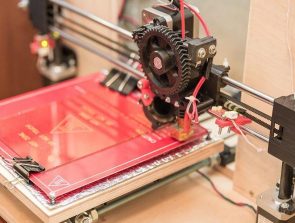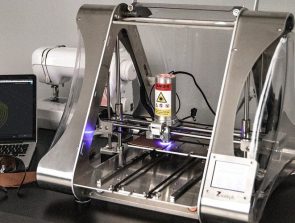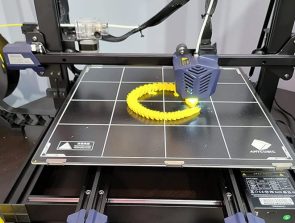The Value of 3D Printing in STEM Education
A decade ago, robotics is something that only the smartest students in a class excelled in. Things are so much different nowadays, as topics like robotics and coding have become more standard fields of knowledge even in young students. This shift is just an indicator of how industries are transitioning into technologies that focus more on automation and efficiency.
3D printing is one of the new subjects being explored by many schools and universities around the world. What lessons can students possibly learn by using a 3D printer? How are 3D printing classes being taught?
STEM to STEAM
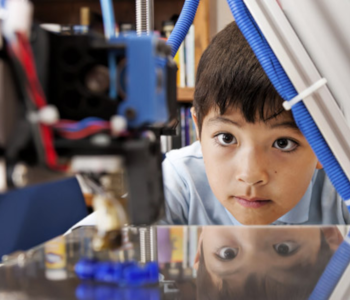
The term ‘STEM education’ has been a buzzword for the better part of the last two decades. This education pertains to topics that are more inclined towards the sciences and math. While training in these fields is undoubtedly critical to the advancement of humankind, its narrow-minded focus has also been the subject of much criticism.
Educational institutions are now taking a more well-rounded approach by adopting the STEAM education model. By incorporating Arts into the fold, this model is more inclusive and more aptly recognizes the contribution of the arts to modern society.
The great thing about 3D printing is that it’s an excellent avenue for STEAM education. 3D printers are as much programmable machines as they are tools for creating visual art. This versatility of 3D printing has given way to lots of educational opportunities, often in ways that are new and surprising.
Tackling the four C’s of learning
3D printing is an excellent teaching tool for the Project-Based Learning (PBL) model. This is a teaching method that focuses on assigning students complex projects to work on instead of just giving them lessons. The PBL method is founded on the four C’s – creativity, communication, collaboration, and critical thinking.
3D printing is something that students learn by doing. The best way to teach students how to use 3D printers of to make them come up with an idea, create a model, and 3D print it. For students, this is a process that encourages working together and relying on each other’s individual strengths.
Trial and error is a natural part of the 3D printing process – even professionals in the field will attest to that. The great thing about trial and error is that it’s also a great way to learn. It can be argued that there is no faster way to learn than to make a mistake and try to correct it.
Giving physical form to theoretical concepts
Through 3D printing, educators around the world find that they can better convey more complex and abstract ideas. This was demonstrated by Dr. Edward Hanson, a professor of mathematics at the Frank McCourt High School in Philadelphia.
Dr. Hanson used 3D printed models to illustrate the appearance of 3D figures generated by trigonometric equations. Imagining in 3D can be innately challenging for many students. By using 3D printed models, they can understand better as they can refer to an actual, tangible object.
Another example of this benefit of 3D printing happened in the Cedar Park STEM Elementary School. Fifth-grade science students were tasked with understanding how different landforms were made. The difficulty of teaching geology is that it involves processes that happen at scales that are difficult to fathom.
After some research, the students used digital sculpting tools to create models of their assigned landforms. These models were then 3D printed. These presented the students with better ways of understanding these concepts. As MakerSpace coordinator yan Erickson put it, “the concept becomes real for them because they have actually created it.”
Creating with a purpose
Too often, students struggle in understanding concepts because they cannot see how these concepts are valuable in the real world. 3D printing is one of the fastest ways to turn ideas into reality.
Students are more easily engaged when they know that they are creating projects that have a purpose. This purpose does not need to be grand. In the STEM3 Academy in Los Angeles, students are tasked to design and 3D print simple but useful items like toolboxes, phone cases, and business cardholders. The lessons learned in these basic projects can be the foundation for higher-level designs, such as custom-made prosthetics.
Beyond the mundane objects, students are also taught about the possibilities of 3D printing. They become more motivated when they discover how 3D printed structures are used for disaster prevention, infrastructure construction, or even in space exploration. Again, this reinforces the idea that there is a purpose to what they are doing.
Modern STEAM educators heavily emphasize the importance of purpose. As teacher Steve Revington puts it, “content without purpose is only trivia.” Students empowered by purpose are self-motivating and often come up with new project ideas without being prodded. Eventually, the students can create 3D printed projects that can benefit the school or the community.
Intriguing technology
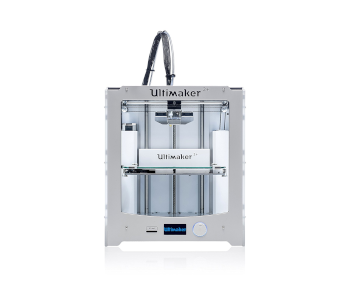
Many industry experts have often described 3D printing as a “disruptive” technology. 3D printing may change the way that we look at manufacturing, making it possible to make highly customized products at low-volume runs. That vision is yet to come true. Despite its many benefits, the widespread adoption of 3D printing is going slowly.
Educators today still have the benefit of introducing 3D printing as a new and novel technology. Many young people have heard of 3D printing but have not actually had the chance to use 3D printers themselves. This can instantly spark curiosity in the students when they are given the chance to work with 3D printers.
3D printers as learning tools also benefit from the fact that they require hands-on activity. This compels students to work with their hands, which is already quite a rare thing nowadays. It also involves coming up with new designs, coding, electronics, and problem-solving.
This can be quite a handful for students to deal with. However, the novelty of 3D printing technology and the idea of actually creating something from scratch has proven to be a reliable hook for young students.
Final thoughts
There is probably no better learning tool for STEM or STEAM than 3D printers. They are engaging, infinitely customizable, and are just unique enough to catch the attention of young students.
3D printers also represent the perfect combination of arts and technology. They offer opportunities to come up with new and innovative ideas and to turn those ideas into actual objects. Throughout the several iterations of trial and error, students can learn about 3D modeling, coding, electronics, and mechanical engineering.
There are now many schools and universities that have recognized the value of 3d printers as educational tools. Soon enough, 3D printings will be the new robotics – it’s where the cool kids are at.


